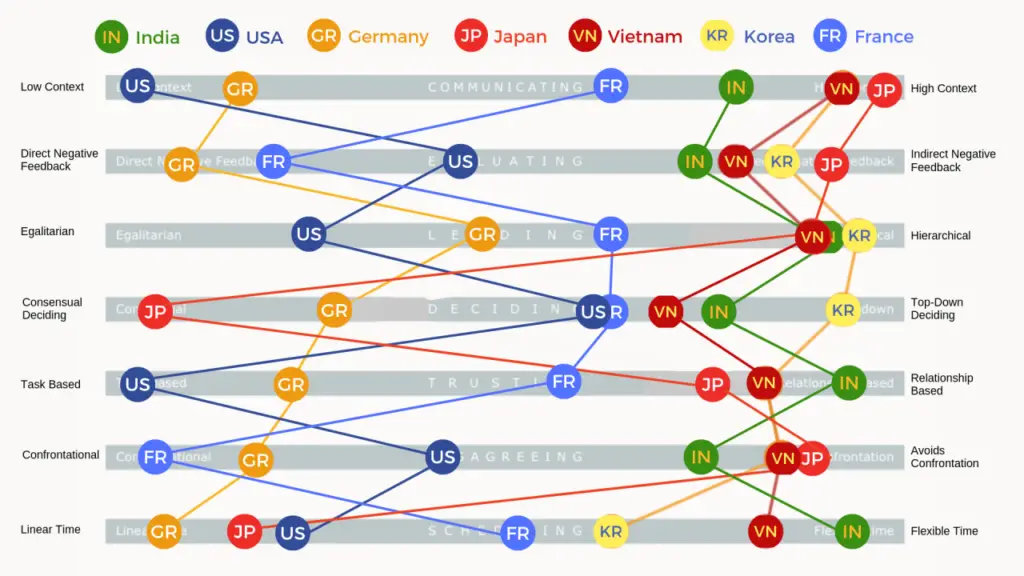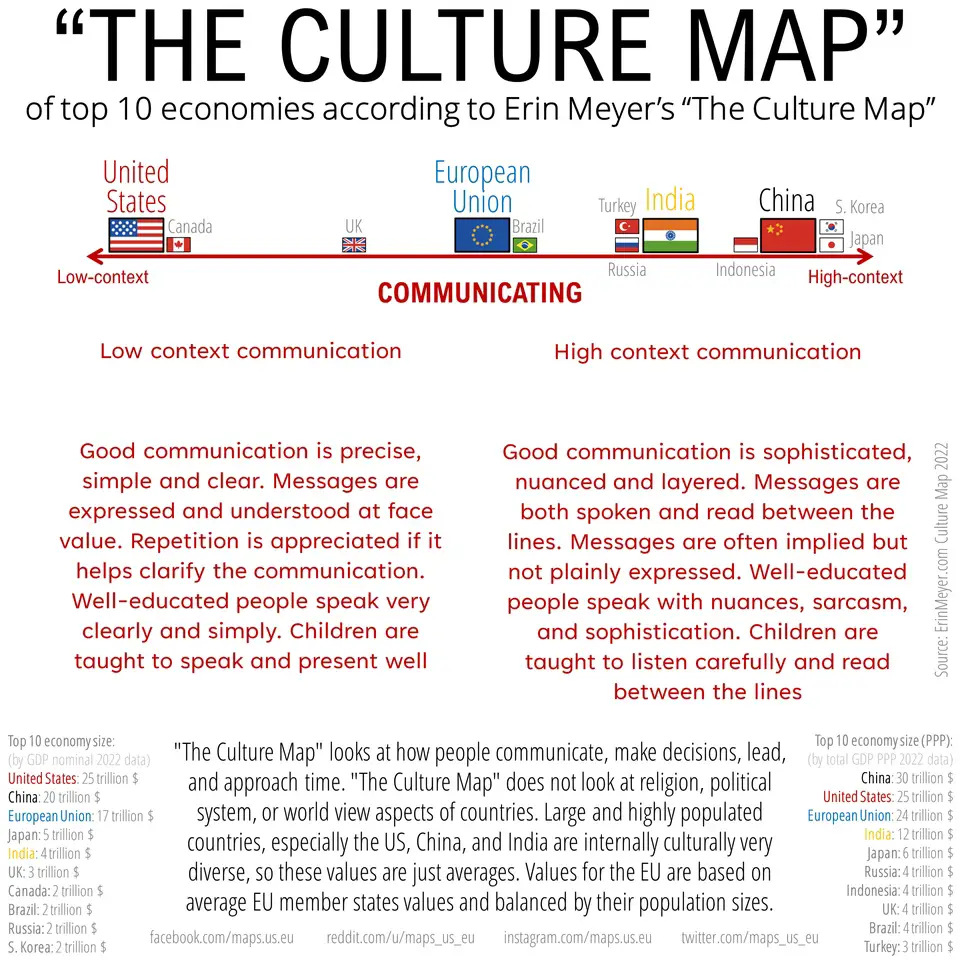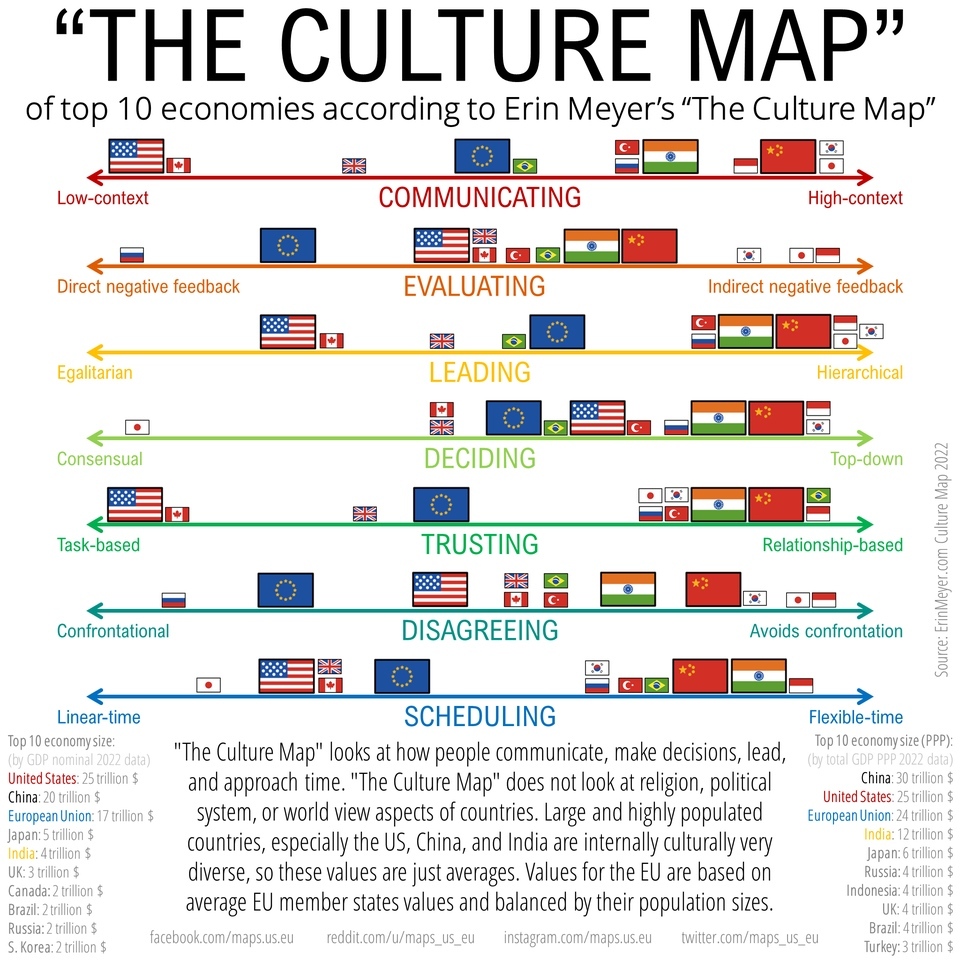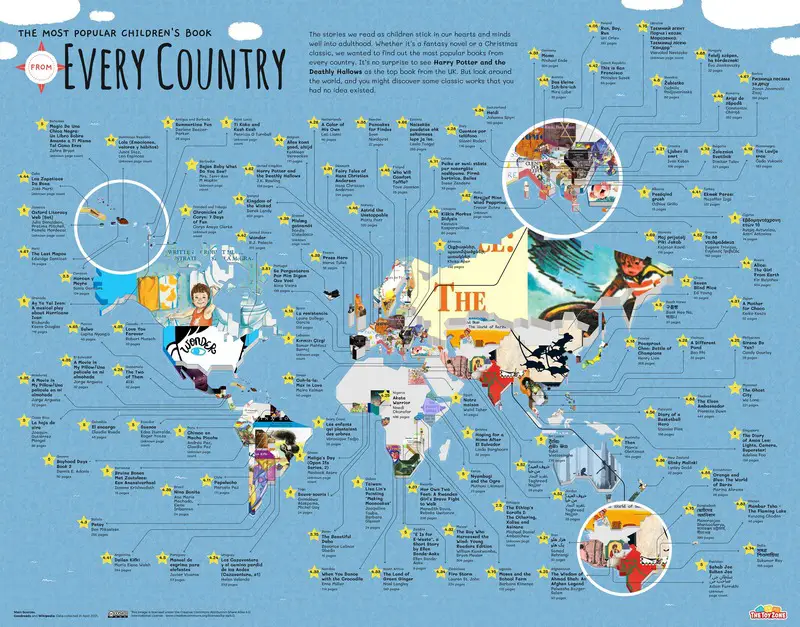The Culture Map, According to Erin Meyer
World countries’ cultures sometimes differ considerably, and this is reflected in various aspects of their religious, political, and economic life. There are now many classifications of cultures that allow us to assess the cultural similarity of every country. Another unique classification of cultures is that of Erin Meyer.
Erin Meyer’s “The Culture Map” looks at how people communicate, make decisions, lead, and approach time. But unlike other classification systems of cultures, “The Culture Map” doesn’t look at countries’ religion, political system, or worldview aspects.
In her book “The Culture Map,” Erin Meyer extraordinarily describes how communication in the world differs between different cultures and nationalities. With 8 scales for behavior and communication, she clarifies the differences at a glance with a left-right scale:
- Communicating (direct or indirect)
- Evaluating (direct or indirect feedback)
- Persuading (principle or application-oriented)
- Leading (egalitarian or hierarchical)
- Deciding (consensual or top-down)
- Trusting (task- or relationship-based)
- Confrontation (direct or indirect)
- Scheduling (linear or flexible time)

Reddit user maps_us_eu visualized the top 10 economies according to Erin Meyer’s “The Culture Map.” On the visualization below, massive and highly populated countries, especially the United States, China, and India, are internally culturally highly diverse, so these estimations are just averages. Values for the European Union are based on average EU member states’ appraises and harmonized by their population sizes.


“The Culture map” reveals that, on the one hand, eastern cultures usually have a very group-oriented mindset, as opposed to the more individualistic western cultures. But that means that western cultures frequently have people push back or dispute ideas, whereas in Japan, they have everyone in a gathering agree on a specific course, but it can be very insubordinate to oppose or speak out. Basically, everyone agrees with what the group (or head/senior individual) says since you don’t want to be the one to cause conflict or speak out.









Hey, I’m wondering about the difference between leading and deciding. I don’t see how a decision would be top down and egalitarian at the same time, wouldn’t a decision from the top form a hierarchy?
I’ve also experienced the American leadership vs Nordic EU leadership and the former was many magnitudes more Hierarchical. Maybe that’s just the Nordic part and it’s far more hierarchical in the rest of the EU but my experience with American leadership was less egalitarian to a very large degree.